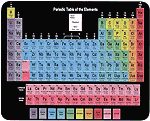 Values given for size and weight are typical
of indicated batteries. Charge and discharge characteristics are quite distinct
for each chemistry, so links to applications notes are provided above for most types.
I wrote an article on my experience with Li-Po batteries that you might be interested in reading. Values given for size and weight are typical
of indicated batteries. Charge and discharge characteristics are quite distinct
for each chemistry, so links to applications notes are provided above for most types.
I wrote an article on my experience with Li-Po batteries that you might be interested in reading.
There are two categories of battery cells: Primary Cells and Secondary Cells.
Here is the basic difference:
Primary Cells are not rechargeable (disposable). Secondary Cells are rechargeable.
Worthy of note is the newest battery chemistry on the commercial market: Lithium
Manganese (LiMn). This battery has all the advantages of LiPo and LiIon, only without
the sensitivity to overcharging and heating that causes explosions. As you might
expect, LiMn cells and battery packs are even more expensive that the already overpriced
LiPo and LiIon varieties. I keep expecting prices to reduce as more and more consumer
products use them, but as with printer ink cartridges, there does not seems to be
any relief in sight.
| Gravimetric Energy Density (Wh/kg) |
45 - 80 |
60 - 120 |
30 - 50 |
110 - 160 |
100 - 150 |
80 (initial) |
| Internal Resistance
(mΩ) (includes peripheral circuits)
|
100 - 200 6V pack
|
200 - 300 6V pack
|
<100 12V pack
|
150 - 250 7.2V pack
|
200 - 300 7.2V pack
|
200 - 2000 6V pack
|
| Cycle Life
(to 80% of initial capacity) |
1500 |
300 - 500 |
200 - 300 |
500 - 1000 |
300 - 500 |
50
(to 50%)
|
| Fast Charge Time |
1h typical |
2-4h |
8-16h |
2-4h |
2-4h |
2-3h |
| Overcharge Tolerance |
moderate |
low |
high |
very low |
low |
moderate |
| Self-discharge / Month
(room temp) |
20% |
30% |
5% |
10% |
10% |
0.3% |
| Cell Voltage
(nominal)
|
1.25V |
1.25V |
2V |
3.6V |
3.6V |
1.5V |
| Load Current*
- peak
- best result
|
20C
1C
|
5C
0.5C or less
|
5C
0.2C
|
>20C
5C or less
|
>20C
5C or less
|
0.5C
0.2C or less
|
| Operating Temperature |
-40 - 60°C |
-20 - 60°C |
-20 - 60°C |
-20 - 60°C |
0 - 60°C |
0 - 65°C |
| Maintenance Requirement |
30 - 60 days |
60 - 90 days |
3 - 6 months |
not req. |
not req. |
not req. |
| Typical Battery Cost |
5.0 (7.2V)
|
6.0 (7.2V)
|
2.5 (6V)
|
10 (7.2V)
|
10 (7.2V)
|
5.0 (9V)
|
| Introduction |
1950 |
1990 |
1970 |
1991 |
1999 |
1992 |
* "C" is a unit that specifies the peak current supply capability of the battery.
Multiply the mAh rating by the "C" value to arrive at
the peak current. For example a 1000 mAh battery with a 20C rating
can supply a peak current of 20,000 mA = 20 A.
| Li-Ion |
|
Variable |
|
3.7 |
| NiCad |
AA |
0.57 x 1.99 |
|
1.20 |
| NiMH |
AA |
0.57 x 1.99 |
|
1.25 |
| Li-Polymer |
|
Variable |
|
3.7 |
| Carbon Zinc |
D |
1.34 x 2.42 |
3.07 |
1.5 |
| Zinc Chloride |
D |
1.34 x 2.42 |
3.74 |
1.5 |
| Alkaline |
D |
1.34 x 2.42 |
4.50 |
1.5 |
| NiCad |
D |
1.34 x 2.42 |
5.30 |
1.25 |
| Carbon Zinc |
C |
1.02 x 1.97 |
1.59 |
1.5 |
| Zinc Chloride |
C |
1.02 x 1.97 |
1.80 |
1.5 |
| Alkaline |
C |
1.02 x 1.97 |
2.20 |
1.5 |
| NiCad |
C |
1.02 x 1.97 |
2.50 |
1.25 |
| Carbon Zinc |
AA |
0.57 x 1.99 |
0.53 |
1.5 |
| Zinc Chloride |
AA |
0.57 x 1.99 |
0.71 |
1.5 |
| Alkaline |
AA |
0.57 x 1.99 |
0.75 |
1.5 |
| NiCad |
AA |
0.57 x 1.99 |
0.85 |
1.25 |
| Zinc Chloride |
AAA |
0.41 x 1.75 |
0.32 |
1.5 |
| Alkaline |
AAA |
0.41 x 1.75 |
0.40 |
1.5 |
| Zinc Chloride |
N |
0.47 x 1.18 |
0.23 |
1.5 |
| Carbon Zinc |
9V |
1.03 x 1.94 x .69 |
1.31 |
9.0 |
| Zinc Chloride |
9V |
1.03 x 1.94 x .69 |
1.36 |
9.0 |
| Alkaline |
9V |
1.03 x 1.94 x .69 |
1.59 |
9.0 |
| NiCad |
9V |
1.03 x 1.94 x .69 |
1.25 |
9.0 |
| Lead Acid |
12V |
Variable |
|
|
Related Pages on RF Cafe: -
Battery Drawings -
Battery Vendors - Li-Po
or Li-Poly Battery Characteristics -
Inside a 9-Volt Battery -
How Many AA Batteries Would to Take to Power a Human?
- Ray-O-Vac Ad, August 25, 1945, Saturday Evening Post
|






























